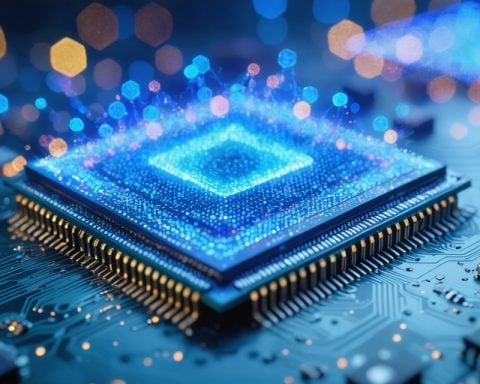While AMD’s history has seen its fair share of ups and downs, the years between the mid-2000s and the mid-2010s were undeniably its darkest. Recent revelations from employees shed light on just how close the company came to the edge of bankruptcy during this period.
Rentaro Fragale, AMD’s senior director of Consumer & Gaming Client Business, recently updated his LinkedIn resume, bringing renewed attention to the company’s struggles during and after the 2008 financial crisis. Fragale mentioned that the launch of the PlayStation 4 in 2013 played a pivotal role in AMD’s escape from possible bankruptcy.
This statement caught the attention of engineer Phil Park, who took to Twitter to confirm the precarious nature of those years for the company. Park shared that AMD was severely affected by the 2008 recession, compounding its troubles as rival Intel quickly recovered with successful products like Merom, Conroe, Woodcrest, and Nehalem.
To stay afloat, AMD made difficult decisions, including selling off valuable intellectual properties (IPs) like Adreno and implementing temporary pay cuts for its employees. These measures were necessary to raise cash and combat the impact of the recession. Additionally, the company spun off its foundries into “Global Foundries.”
The first glimmer of hope came with the development of the Bobcat architecture, designed for low-power systems. Despite initial struggles, Bobcat exceeded expectations, providing a much-needed boost to the company’s prospects. However, the true turning point came when Sony and Microsoft chose AMD’s Jaguar chip to power their PlayStation 4 and Xbox One consoles, respectively.
This decision proved to be a game-changer for AMD. Sony’s PS4 alone sold an impressive 117 million units by 2022, making the Jaguar chip one of the most widely used in AMD’s portfolio. According to Park, this success kept the company afloat until the introduction of Zen, which marked AMD’s resurgence and brought it back to competitiveness with Intel.
Today, AMD continues to dominate the industry with its Zen and RDNA architectures, powering the latest PlayStation 5 and Xbox Series consoles. Looking ahead, the company has exciting plans to introduce RDNA 4, Zen 5, and RDNA 5 in the coming years. It’s clear that AMD’s journey from the brink of bankruptcy to its current position of strength is nothing short of remarkable.
Some additional relevant facts about AMD’s remarkable recovery are:
1. Acquisition of ATI Technologies: In 2006, AMD acquired ATI Technologies, a major graphics card manufacturer, which gave them a competitive edge in the graphics market.
2. Collaboration with TSMC: AMD partnered with Taiwan Semiconductor Manufacturing Company (TSMC) to manufacture their processors, which helped reduce manufacturing costs and improve efficiency.
3. Introduction of Ryzen processors: AMD’s release of the Ryzen processors in 2017 was a game-changer for the company. These processors offered high-performance capabilities at competitive prices, challenging Intel’s dominance in the CPU market.
4. Expansion into data centers: AMD expanded its focus beyond consumer electronics and entered the data center market with its EPYC processors. These processors offered high performance and cost-effectiveness, attracting major cloud computing providers.
5. Improvements in GPU technology: AMD’s Radeon GPUs have made significant strides in performance and efficiency, making them a popular choice among gamers and content creators.
Key questions and their answers related to AMD’s recovery:
1. How did the launch of PlayStation 4 help AMD escape bankruptcy?
The launch of PlayStation 4 played a pivotal role in AMD’s escape from possible bankruptcy because Sony chose AMD’s Jaguar chip to power the console, providing a significant revenue stream for the company.
2. What measures did AMD take to stay afloat during the financial crisis?
To stay afloat during the financial crisis, AMD sold off valuable intellectual properties (IPs) like Adreno, implemented temporary pay cuts for employees, and spun off its foundries into “Global Foundries.”
3. What were the turning points in AMD’s recovery?
The development of the Bobcat architecture, which exceeded expectations, and the success of AMD’s Jaguar chip in the PlayStation 4 and Xbox One consoles were key turning points in AMD’s recovery.
Key challenges and controversies associated with the topic:
1. Competition with Intel: AMD faces stiff competition from Intel in both the CPU and GPU market. Maintaining competitiveness and market share against Intel’s dominance remains a significant challenge.
2. Supply constraints: Like other semiconductor companies, AMD has faced challenges in meeting global demand due to supply chain constraints and shortages of key components, impacting its ability to fully capitalize on market opportunities.
Advantages and disadvantages:
Advantages:
1. Strong product lineup: AMD’s Zen and RDNA architectures have been well-received, offering high-performance processors and GPUs at competitive prices.
2. Diversified offerings: AMD’s presence in the consumer electronics, data center, and gaming markets provides diversification and multiple revenue streams.
Disadvantages:
1. Competition from Intel and Nvidia: AMD faces intense competition from industry giants like Intel and Nvidia, which may impact its market share and margins.
2. Supply chain uncertainties: AMD, like other semiconductor companies, is vulnerable to supply chain disruptions, impacting its ability to meet demand and fulfill orders.
Suggested related links:
– AMD (official website)
– TSMC (official website)
– Intel (official website)
– Nvidia (official website)


















